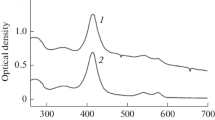Abstract
Erythrocyte glucose-6-phosphate dehydrogenase (G6PD) was examined by 13% starch gel electrophoresis in 74 mules (42 females and 32 males), 35 donkeys, and ten horses. The quantitative expression of the parental alleles at the Gpd locus varies greatly in female mules from the hemizygous expression of the maternal allele to that of the paternal. The data obtained indicate that the X chromosomes are randomly inactivated in female mules. No selective advantage of a cell population with a maternally (or paternally) derived X active was found in female mule erythrocytes. It is suggested that the phenotypic variability in the expression of the parental Gpd alleles is related to the random proportions established between cells having either a maternal or paternal X active in an initiator (stem) cell group giving rise to erythroid tissue. Initiator cell numbers estimated for erythroid tissue (six or seven) are close to those reported for human females and intergeneric fox hybrids. These numbers may vary depending on the duration of the time of determination and the division rate of initiator cells at determination.
Similar content being viewed by others
References
Bergman, N., and Gustavsson, I. (1971). Variable starch gel electrophoretic pattern of the enzyme 6-phosphogluconate dehydrogenase in a family of donkeys (Equus asinus L.). Hereditas 67145.
Cohen, M. M., and Rattazzi, M. C. (1971). Cytological and biochemical correlation of late X-chromosome replication and gene inactivation in the mule. Proc. Natl. Acad. Sci. 68544.
Fialkow, P. J. (1973). Primordial cell pool size and lineage relationships of five human cell types. Ann. Hum. Genet. 3739.
Gandini, E., Gartler, S. M., Angioni, G., Argiolas, N., and Dell'Acqua, G. (1968). Developmental implications of multiple tissue studies in glucose-6-phosphate dehydrogenase-deficient heterozygotes. Proc. Natl. Acad. Sci. 61945.
Hamerton, J. L., and Giannelli, F. (1970). Non-random inactivation of the X-chromosome in the female mule. Nature 2281322.
Hamerton, J. L., Giannelli, F., Collins, F., Hallett, J., Fryer., and McGuire, V. M. (1969). Non-random X-inactivation in the female mule. Nature 2221277.
Hamerton, J. L., Richardson, B. J., and Gee, P. A. (1971). Non-random X-chromosome expression in female mules and hinnies. Nature 232312.
Hook, E. B., and Brustman, L. D. (1971). Evidence for selective differences between cells with an active horse X chromosome and cells with an active donkey X chromosome in the female mule. Nature 232349.
Mathai, C. K., Ohno, S., and Beutler, E. (1966). Sex-linkage of the glucose-6-phosphate dehydrogenase gene in Equidae. Nature 210115.
Mintz, B. (1971). Clonal basis of mammalian differentiation. In Davies, D. D., and Balls, M. (eds.), Control Mechanisms of Growth and Differentiation (25th Symp. Soc. Exp. Biol.), Vol. 25. Cambridge Univ. Press, Cambridge, p. 345.
Mintz, B. (1974). Gene control of mammalian differentiation. Ann. Rev. Genet. 8411.
Nance, W. E. (1964). Genetic tests with a sex-linked markers: Glucose-6-phosphate dehydrogenase. Cold Spring Harbor Symp. Quant. Biol. 29415.
Rattazzi, M. C., and Cohen, M. M. (1972). Further proof of genetic inactivation of the X chromosome in the female mule. Nature 237393.
Rietra, P. J. G. M., Brouwer-Kelder, E. M., de Groot, W. P., and Tager, J. M. (1976). The use of biochemical parameters for the detection of carriers of Fabry's disease. J. Mol. Med. 1237.
Sanger, R., Race, R. R., Tippett, P., Cavin, J., Hardisty, R. M., and Dubowitz, V. (1964). Unexplained inheritance of the Xg groups in two families. Lancet 8955.
Serov, O. L., Zakijan, S. M., Kulichkov, V. A., Korochkin, L. I., and Vladimirov, A. V. (1976). Expression of homologous genes in intergeneric fox hybrids (Alopex lagopus × Vulpes vulpes). III. Study of mechanisms of expression of alleles at the Gpd locus linked to the X-chromosome. Genetika 12(11):44 (in Russian).
Shows, T. B., Tashian, R. E., Brewer, G. J., and Dern, R. J. (1964). Erythrocyte glucose-6-phosphate dehydrogenase in Caucasians: New inherited variant. Science 1451056.
Trujillo, J. M., Walden, B., O'Neil, P., and Anstall, H. B. (1965). Sex-linkage of glucose-6-phosphate dehydrogenase in the horse and donkey. Science 1481603.
Author information
Authors and Affiliations
Rights and permissions
About this article
Cite this article
Serov, O.L., Zakijan, S.M. & Kulichkov, V.A. Analysis of mechanisms regulating the expression of parental alleles at the GPD locus in mule erythrocytes. Biochem Genet 16, 379–386 (1978). https://doi.org/10.1007/BF00484205
Received:
Revised:
Issue Date:
DOI: https://doi.org/10.1007/BF00484205




